
![]()
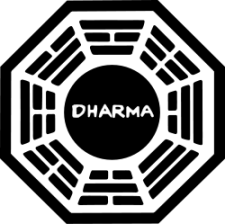 Overview
Overview
The DHARMA (Department of Heuristics And Research on Material Applications) Initiative was a scientific research project that had a large presence on the Island between the 1970s and the early 1990s. The project is represented by variations of an octagonal logo, a variation of the Ba Gua which comes from Daoist mysticism, that appear on most of its products and facilities.
The Initiative’s general goal was to manipulate scientific laws in order to change any of the six factors of the Valenzetti Equation, a sequence that was believed to have some connection to the date marking the end of humanity, in hopes of delaying such a date.
The Hanso Foundation cut the DHARMA Initiative’s funding in 1987. The DHARMA Initiative largely ended after the Purge, an event that saw the death of almost all of its members on the Island at the hands of the Hostiles.
Creation of the DHARMA Initiative
According to various orientation films, the Initiative was founded in 1970 by Gerald and Karen DeGroot, two doctoral candidates at the University of Michigan in Ann Arbor, Michigan. It was financially backed by Danish industrialist and munitions magnate Alvar Hanso and his Hanso Foundation.
However, since The Lamp Post was built in the 1960s, the date of 1970 given by Pierre Chang in the orientation films may be incorrect.
Finding and settling the Island
According to Eloise Hawking, an unspecified man used The Lamp Post station in Los Angeles to find the location of the Island in the 1960s. Located underneath a church, the Lamp Post harnessed the unique pocket of energy in that area and used it to find other similar pockets around the globe. Though this man was only interested in one specific area: the Island. Since the Island was always moving, the Lamp Post was integral in finding the Island’s location. Within a few years’ time, the location was uncovered.
At some point in the early 1970s, the DHARMA Initiative founded a tiny community on the Island. The Barracks became the center of operation for the DHARMA Initiative on the Island. Significant quantities of construction materials, electronic equipment and various vehicles and machinery were brought to the Island during the phase of settlement for the construction of the various DHARMA stations. Off the Island, the DHARMA Initiative’s activities were coordinated from Ann Arbor in Michigan. (“Some Like It Hoth”)
Conflict with the Hostiles
Not long after settling on the Island, the DHARMA Initiative fought an armed conflict with a group they called the Hostiles prior to 1973. The reasons for the conflict are not known, though Horace Goodspeed stated that the Hostiles were natives to the Island, implying that a conflict could have arisen from DHARMA moving into their territory or intruding on the Island. On August 15, 1973, DHARMA and the Hostiles agreed to a Truce, and an uneasy peace existed between them for nearly two decades.
DHARMA appears not only to have violated the Truce but to have taken steps as the conflict escalated, including devoting one of their stations (The Arrow) to developing new strategies against the Hostiles, installation of security cameras and other monitoring systems, weapon stockpiles (unusual for a utopian community) and even having a professional interrogator on their staff. The conflict between the two does not appear to have been helped by the appearance of the time shifting survivors in 1974-1977.
Regardless of the cause, the conflict ended in December 1992 with an event known as the Purge. The Hostiles launched a toxic gas attack on the Barracks (and possibly other locations) that killed nearly all DHARMA personnel on the Island. Staff at The Swan survived, as they were sealed inside their station, and other DHARMA members, including Benjamin Linus and Ethan Rom, survived by joining the Hostiles. The bodies of those killed in the attack were piled into an open mass grave in the jungle. The Hostiles continue to survive today as the group Danielle Rousseau, the survivors of Oceanic Flight 815 and the survivors of the freighter Kahana call “the Others”.
After the slaughter, some of the DHARMA projects on the Island collapsed. For example, the polar bears escaped from their cages during the collapse, according to Damon Lindelof and Carlton Cuse in the Official Lost Podcasts.
Other than those DHARMA members who joined the Others (such as Benjamin Linus and Ethan Rom), there are only two DHARMA members on the Island who are known to have survived the Purge: Stuart Radzinsky and Kelvin Inman, who remained in The Swan after the Purge. Radzinsky committed suicide at an unknown date, and Inman, the last known member of the Initiative on the Island, died September 22, 2004. In the March 20, 2007 Official Lost Podcast, Carlton Cuse said he did not believe that The Others knew about the Swan station, but acknowledged that they might have observed the Swan through the monitors at the Pearl.
DHARMA after the Purge
The DHARMA Initiative collapsed or was destroyed off the Island as well, although the details of this remain unclear. In the Official Lost Podcasts, executive producers Damon Lindelof and Carlton Cuse also make frequent references to DHARMA’s fall as a “collapse”. In the Sri Lanka video, Thomas Mittelwerk stated that “we all know what happened: the DHARMA Initiative failed.”
The date of DHARMA’s collapse is unclear as well. In 2010, Benjamin Linus states that the DHARMA Initiative has not existed “for over twenty years”. (“The New Man in Charge”) Hugh McIntyre of the Hanso Foundation said in an interview as part of The Lost Experience that the DHARMA Initiative’s funding was cut in 1987. However, this seems to conflict with the 1992 date for the Purge (if we are to take the math of Horace Goodspeed’s spirit literally).
By 2004 at the latest, The Lamp Post was in the control of Eloise Hawking. (“316”) It is unknown whether other DHARMA facilities off the Island were similarly taken over by the Others.
The DHARMA Logistics Warehouse in Orote Peninsula, Guam, continued to function, delivering periodic resupply drops to the Island. This warehouse was run by Hector and Glenn, who were unaware that the rest of the DHARMA Initiative no longer existed. In 2010, Benjamin Linus closed down this warehouse. (“The New Man in Charge”)
Nothing is known about the fate of Alvar Hanso, the DeGroots, or the DHARMA headquarters in Ann Arbor, Michigan.
Project Aims
According to various orientation films, the Initiative was founded in 1970 by Gerald and Karen DeGroot, two doctoral candidates at the University of Michigan. It was financially backed by Danish industrialist and munitions magnate Alvar Hanso and his Hanso Foundation. The alleged purpose of the Initiative, according to the Swan Orientation film, was to create “a large-scale communal research compound where scientists and free-thinkers from around the globe could pursue research in meteorology, psychology, parapsychology, zoology, electromagnetism, and Utopian social-[static].”
The Barracks video also said that the mission of the Initiative on the Island was to study its unique properties for the betterment of mankind and advancement of world peace.
The Sri Lanka Video of The Lost Experience appears to build on the last statement, explaining that the DHARMA Initiative was part of a project begun in response to the Valenzetti Equation commissioned by the UN in 1967, a mathematical formula that reportedly predicts the amount of time until the extinction of mankind. The purpose of the DHARMA Initiative on the Island was to use scientific research to manipulate the environment in order to change any one of the core factors of the Valenzetti Equation which, in turn, would change the Equation’s result and thus change mankind’s destiny. They were also interested in researching the unique properties on the Island found nowhere else in the world, again for the betterment of humanity.
Image Source | Images & Source
Further Reading
Decoded Members of The DHARMA Initiative
Primary “DHARMA” Members
Secondary “DHARMA” Members
Founding “DHARMA Initiative” Members & Family
Key Episode(s) to Decoding the Faction
LOST: Alternate Reality Game
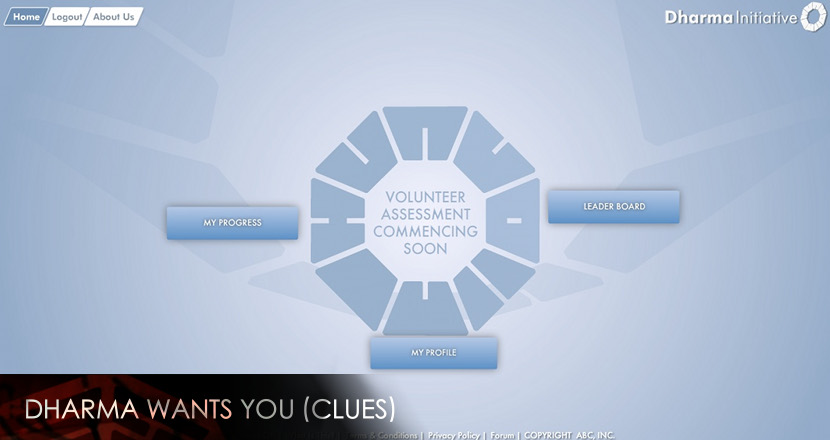
DharmaWantsYou.com (Original Link Dead) was a website launched as part of the new Lost alternate reality game running during the hiatus between Seasons 4 and 5. A newsletter email from Octagon Global Recruiting identified the site as a place where volunteers may be assessed for their eligibility to join their project. It has been stated that this will be available for a limited time only, testing has ended on October 7th, 2008.
Candidate Tests
The website has issued a series of tests, and from this assigned candidates into specific groups. More details about each test can be viewed in individual article spaces. Beginning with an eligibility test, a series of other tests are being released weekly (each seemingly with a “cheat” function built into the evaluation). Prior to the release of the assessment tests, an eligibility test was given to recruits. Recruits were also able from September 10th to create their own tests with Recruit Created Assessments for others to play, earning themselves Dharma points in the process.
- Test 1: Pressurized Spatial Judgment Evaluation
- Test 2: Broad Spectrum Knowledge Analysis
- Test 3: Dexterity and Attentiveness Evaluation
- Test 4: Tangential Judgment Analysis
- Test 5: Numeric Projection Evaluation
- Test 6: Specialized Departmental Evaluation
- Test 7: Honesty and Integrity Test
Candidate Groups (Clues: Greek Mythology)
The candidate group names are all characters from Greek mythology. After completeing each test, recruits were assigned to a new group.
The candidates groups form a tree data structure. An example path through the structure is shown in the illustration in red. There are 8640 (2x3x4x5x6x6x2) unique possibilities through the system, assuming that all nodes from one level connect to all nodes of the next level.
Groups per test
The table below gives the details of the candidate groups by test:
| Test # | Group Theme | Group Names | Total Groups |
| Test 1 | Moons | Ganymede, Pandora | 2 Groups |
| Test 2 | Cyclopes | Brontes, Polyphemus, Steropes | 3 Groups |
| Test 3 | Giants | Antaeus, Enceladus, Otus, Tityos | 4 Groups |
| Test 4 | Titans | Atlas, Crius, Cronus, Helios, Oceanus | 5 Groups |
| Test 5 | Protogenoi | Aether, Chaos, Chronos, Hemera, Nyx, Oranos | 6 Groups |
| Test 6 | Olympians | Apollo, Ares, Athena, Demeter, Hestia, Poseidon | 6 Groups |
| Test 7 | Cygni | Black Swan, White Swan | 2 Groups |
Test 6 Groups
For Test 6, the candidate group placement was apparently chosen before the test. Based on candidate reports, the types of questions asked indicated what group they were assigned to. The table below shows the types of question asked and the associated group the candidate was assigned to:
Question Type (Group Assigned)

1. Psychology & Philosophy |

2. Architecture |

3. Mathematics |

4. Electronics & |

5. Medical & |
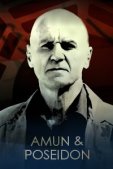
6. Biology & |
Greek references within the DHARMA Initiative
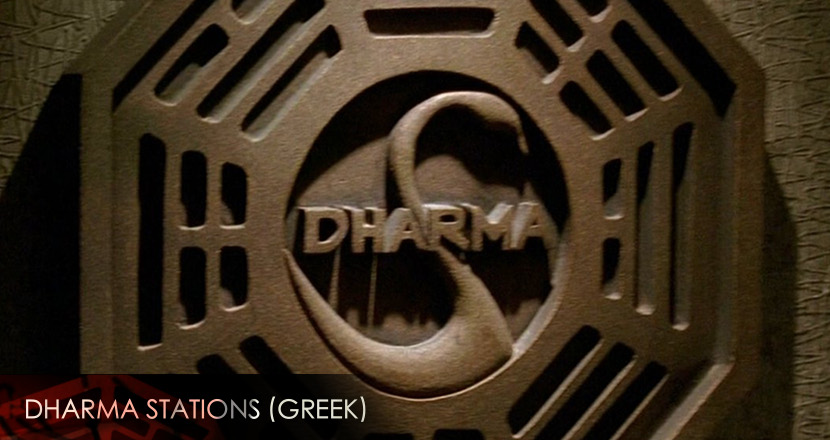
DHARMA Stations
The Hydra, relates to the many-headed monster from Greek mythology, and was killed by Heracles as one of the twelve tasks he was given after a terrible crime. Theoretically it could not be killed – if a head were cut off, several more would grow in its place. Heracles and his friend Iolaus killed it by cauterizing the stumps of each neck as Heracles severed it except one head which was immortal that they buried.
The Arrow, relates to the god Apollo & goddess Artemis from Greek mythology. Apollo was a god of archery and one of his symbols was the bow and arrow. Artemis, Apollo’s twin sister was the goddess of the hunt and usually depicted as a huntress carrying bows and arrows.
The Swan, relates to the god Apollo from Greek mythology. Swans are sacred to Apollo, and circled around him when he was born.
The Flame, relates to the god Hades from Greek mythology. Hades was the god of the Underworld, which in a Christian view is called Hell. The concept of Hell is traditionally considered a fiery place of suffering and punishment in the afterlife.
The Pearl, relates to the Titan Atlas from Greek mythology. Atlas was the Titan who was punished by Zeus and forced to support the heavens and governed the moon. The Sanskrit translation for Pearl is “Falling Star” or “Gem of the Moon”.
The Orchid, relates to the god Zeus from Greek mythology. In ancient Greece, orchids were symbols of virility. Masculine attributes such as beard growth were seen as a sign of virility and leadership. Zeus, the King of the Gods was commonly depicted with a beard and was famous for his many conquests and numerous children.
The Staff, relates to the god Asclepius from Greek mythology. The station logo incorporated the “Caduceus” – the alchemical symbol in western tradition for medicine. According to Greek Mythology, the Caduceus staff originally belonged to Apollo who eventually traded it to Hermes. The common mistake in modern medicine is its usage over the correct Rod of Asclepius.
The Looking Glass, relates to the god Phorcys & goddess Demeter from Greek mythology. The station insignia (a white rabbit and watch) is a reference to the white rabbit from Alice’s Adventures in Wonderland; Rabbits are a common symbol of fertility. Phorcys was the Primordial Sea God of the hidden dangers of the deep, while Demeter was the Goddess of the Harvest, Earth and Agriculture.
The Lamp Post, relates to the goddess Amphitrite from Greek mythology. The lamp post in Narnia was explained in book six of the The Chronicles of Narnia, The Magician’s Nephew. A young boy named Digory discovers a “place between worlds” that allows him to visit other versions of reality by jumping through pools. Amphitrite was a sea goddess and wife of Poseidon.
Miscellaneous References
The “Apollo” Bar was one of the many foods that were first found in the pantry within The Swan station.
A number of “Cerberus” Vents (CV) were located on the Swan’s Blastdoor Map and the Cerberus Chamber was located beneath the Temple where the Monster later accessed the chamber to judge Ben.
The “Helios” Foundation is a metafictional location which appears in Bad Twin, a novel written by Flight 815 passenger Gary Troup.
“Persephone” was the alias used by Rachel Blake during the storyline of the Lost alternate reality game The Lost Experience. It was later confirmed that Rachel is the daughter of Alvar Hanso.
The “Medusa” Spider is a dangerous species of spider found on the Island. Nikki used the live Medusa Spider to attack Paulo which caused paralysis and resulted in both being confirmed dead and buried alive.
At the top of Jacob’s tapestry is a quote from Homer’s Odyssey which translates to “May the gods grant thee all that thy heart desires. A second tapestry Odyssey quote reads, “May the gods grant thee happiness,” and at the bottom are Plato’s words: “Only the dead have seen the end of war.”
The writers have referenced the Hatch as a metaphor for “Pandora’s” Box. Locke tells Hurley he believes “hope is inside.”
Penelope Hume’s name and role mirror that of the Odyssey’s Penelope. In the Odyssey, Penelope was Odysseus‘ loyal wife and mother of Telemachus.
Kronos is a fictional company shown in an ad in the soccer game Desmond is watching on television in a bar. In Greek mythology, Chronos was the God of Time.
Island History
Ptolemaic (Greek) Dynasty in Egypt
In 332 BC Alexander III of Macedon conquered Egypt with little resistance from the Persians. He was welcomed by the Egyptians as a deliverer. He visited Memphis, and went on a pilgrimage to the oracle of Amun at the Oasis of Siwa. The oracle declared him to be the son of Amun. He conciliated the Egyptians by the respect which he showed for their religion, but he appointed Greeks to virtually all the senior posts in the country, and founded a new Greek city, Alexandria, to be the new capital. The wealth of Egypt could now be harnessed for Alexander’s conquest of the rest of the Persian Empire. Early in 331 BC he was ready to depart, and led his forces away to Phoenicia. He left Cleomenes as the ruling nomarch to control Egypt in his absence. Alexander never returned to Egypt.
Greek Cosmogony & Cosmology

“Myths of origin” or “creation myths” represent an attempt to render the universe comprehensible in human terms and explain the origin of the world. The most widely accepted version at the time, although a philosophical account of the beginning of things, is reported by Hesiod, in his Theogony. He begins with Chaos, a yawning nothingness. Out of the void emerged Gaia (the Earth) and some other primary divine beings: Eros (Love), the Abyss (the Tartarus), and the Erebus. Without male assistance, Gaia gave birth to Uranus (the Sky) who then fertilized her. From that union were born first the Titans—six males: Coeus, Crius, Cronus, Hyperion, Iapetus, and Oceanus; and six females: Mnemosyne, Phoebe, Rhea, Theia, Themis, and Tethys. After Cronus was born, Gaia and Oranos decreed no more Titans were to be born. They were followed by the one-eyed Cyclopes and the Hecatonchires or Hundred-Handed Ones. Cronus (“the wily, youngest and most terrible of Gaia’s children”) castrated his father and became the ruler of the gods with his sister-wife Rhea as his consort, and the other Titans became his court.
A motif of father-against-son conflict was repeated when Cronus was confronted by his son, Zeus. Because Cronus had betrayed his father, he feared that his offspring would do the same, and so each time Rhea gave birth, he snatched up the child and ate it. Rhea hated this and tricked him by hiding Zeus and wrapping a stone in a baby’s blanket, which Cronus ate. When Zeus was full grown, he fed Cronus a drugged drink which caused him to vomit, throwing up Rhea’s other children and the stone, which had been sitting in Cronus’s stomach all along. Zeus then challenged Cronus to war for the kingship of the gods. At last, with the help of the Cyclopes (whom Zeus freed from Tartarus), Zeus and his siblings were victorious, while Cronus and the Titans were hurled down to imprisonment in Tartarus.
Zeus was plagued by the same concern and, after a prophecy that the offspring of his first wife, Metis, would give birth to a god “greater than he”—Zeus swallowed her. She was already pregnant with Athena, however, and they made him miserable until Athena burst forth from his head—fully-grown and dressed for war. This “rebirth” from Zeus was used as an excuse for why he was not “superseded” by a child of the next generation of gods, but accounted for the presence of Athena. It is likely that cultural changes already in progress absorbed the long-standing local cult of Athena at Athens into the changing Olympic pantheon without conflict because it could not be overcome.
The earliest Greek thought about poetry considered the theogonies to be the prototypical poetic genre—the prototypical mythos—and imputed almost magical powers to it. Orpheus, the archetypal poet, also was the archetypal singer of theogonies, which he uses to calm seas and storms in Apollonius’ Argonautica, and to move the stony hearts of the underworld gods in his descent to Hades. When Hermes invents the lyre in the Homeric Hymn to Hermes, the first thing he does is sing about the birth of the gods. Hesiod’s Theogony is not only the fullest surviving account of the gods, but also the fullest surviving account of the archaic poet’s function, with its long preliminary invocation to the Muses. Theogony also was the subject of many lost poems, including those attributed to Orpheus, Musaeus, Epimenides, Abaris, and other legendary seers, which were used in private ritual purifications and mystery-rites. There are indications that Plato was familiar with some version of the Orphic theogony. A silence would have been expected about religious rites and beliefs, however, and that nature of the culture would not have been reported by members of the society while the beliefs were held. After they ceased to become religious beliefs, few would have known the rites and rituals. Allusions often existed, however, to aspects that were quite public.
Images existed on pottery and religious artwork that were interpreted and more likely, misinterpreted in many diverse myths and tales. A few fragments of these works survive in quotations by Neoplatonist philosophers and recently unearthed papyrus scraps. One of these scraps, the Derveni Papyrus now proves that at least in the fifth century BC a theogonic-cosmogonic poem of Orpheus was in existence. This poem attempted to outdo Hesiod’s Theogony and the genealogy of the gods was extended back to Nyx (Night) as an ultimate female beginning before Eurynome, Uranus, Cronus, and Zeus. Night and Darkness could equate with Chaos.
The first philosophical cosmologists reacted against, or sometimes built upon, popular mythical conceptions that had existed in the Greek world for some time. Some of these popular conceptions can be gleaned from the poetry of Homer and Hesiod. In Homer, the Earth was viewed as a flat disk afloat on the river of Oceanus and overlooked by a hemispherical sky with sun, moon, and stars. The Sun (Helios) traversed the heavens as a charioteer and sailed around the Earth in a golden bowl at night. Sun, earth, heaven, rivers, and winds could be addressed in prayers and called to witness oaths. Natural fissures were popularly regarded as entrances to the subterranean house of Hades and his predecessors, home of the dead. Influences from other cultures always afforded new themes.
The Twelve Olympians
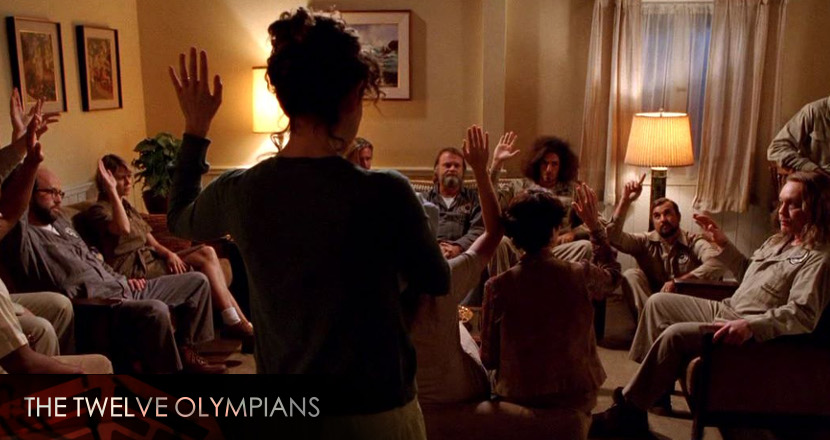
The Twelve Olympians, also known as the Dodekatheon (“twelve”+ “gods”), in Greek mythology, were the principal gods of the Greek pantheon, residing atop Mount Olympus. The Twelve Olympians gained their supremacy in the world of gods after Zeus led his siblings to victory in war with the Titans.
Zeus, Hera, Poseidon, Demeter, Hestia, Hades, and Chiron (who was not a god, but a trainer to the children of the gods, also known as, demigods) were siblings. Ares, Hermes, Hephaestus, Aphrodite, Athena, Apollo, Artemis, the Charites, Heracles, Dionysus, Hebe, and Persephone were children of Zeus. Some versions of the myths state that Hephaestus was born of Hera alone, and that Aphrodite was born of Uranus‘ blood.
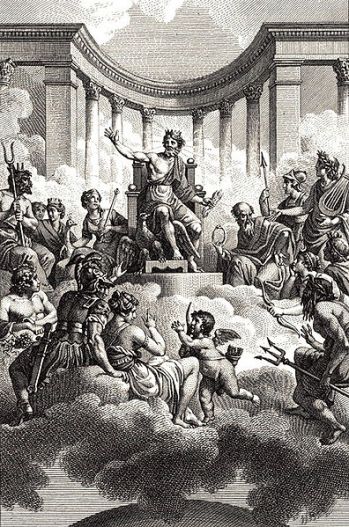 The first ancient reference of religious ceremonies for them is found in the Homeric Hymn to Hermes. The Greek cult of the Twelve Olympians can be traced to the 6th century BC Athens and probably has no precedent in the Mycenaean period. The altar to the Twelve Olympians at Athens is usually dated to the archonship of the younger Pesistratos, in 522/521 BC. The concept of the “Twelve Gods” is older than any of our Greek or Roman sources, and is likely of Anatolian origin. There seems to have been a great deal of fluidity when it came to who was counted among their number in antiquity.
The first ancient reference of religious ceremonies for them is found in the Homeric Hymn to Hermes. The Greek cult of the Twelve Olympians can be traced to the 6th century BC Athens and probably has no precedent in the Mycenaean period. The altar to the Twelve Olympians at Athens is usually dated to the archonship of the younger Pesistratos, in 522/521 BC. The concept of the “Twelve Gods” is older than any of our Greek or Roman sources, and is likely of Anatolian origin. There seems to have been a great deal of fluidity when it came to who was counted among their number in antiquity.
Hades (Roman: Pluto) was not generally included in this list. He did not have a seat in the pantheon because he spent almost all of his time in the underworld. The respective Roman scheme as given by Ennius gives the Roman equivalents of these Greek gods but replaces Dionysus (Bacchus) with Hestia (Vesta) so as to list six gods and six goddesses. The difference in the list is explained by the story that when Dionysus was offered a seat among the Olympians, the total number of Olympians became thirteen. Believing this would create a fight amongst the gods, Hestia stepped down.
Herodotus included in his Dodekatheon the following deities: Zeus, Hera, Poseidon, Hermes, Athena, Apollo, Alpheus, Cronus, Rhea and the Charites. Herodotus also includes Heracles as one of the Twelve. Lucian also includes Heracles and Asclepius as members of the Twelve, without explaining which two had to give way for them. At Kos, Heracles and Dionysus are added to the Twelve, and Ares and Hephaestus are left behind. However, Pindar, Apollodorus, and Herodorus disagree with this. For them Heracles is not one of the Twelve Gods, but the one who established their cult. Hebe, Helios, Eos, Selene and Persephone are other important gods and goddesses which are sometimes included in a group of twelve. Eros is often depicted alongside the other twelve, especially his mother Aphrodite, but is rarely considered one of the Olympians.
Plato connected the Twelve Olympians with the twelve months, and proposed that the final month be devoted to rites in honor of Hades and the spirits of the dead, implying that he considered Hades to be one of the Twelve. Hades is phased out in later groupings due to his chthonic associations. In Phaedrus Plato aligns the Twelve with the Zodiac and would exclude Hestia from their rank.
The classical scheme of the Twelve Olympians:
The Titans

In Greek mythology, the Titans were a race of powerful deities, descendants of Gaia and Uranus, that ruled during the legendary Golden Age.
In the first generation of twelve Titans, the males were Oceanus, Hyperion, Coeus, Cronus, Crius and Iapetus and the females were Mnemosyne, Tethys, Theia, Phoebe, Rhea and Themis. The second generation of Titans consisted of Hyperion’s children Eos, Helios, and Selene; Coeus’s daughters Leto and Asteria; Iapetus’s sons Atlas, Prometheus, Epimetheus, and Menoetius; Oceanus’ daughter Metis; and Crius’s sons Astraeus, Pallas, and Perses.
The Titans as Elder Gods were overthrown by a race of younger gods, the Olympians, in the Titanomachy (“War of the Titans”) which effected a mythological paradigm shift that the Greeks may have borrowed from the Ancient Near East.
In Orphic Sources
 Hesiod does not, however, have the last word on the Titans. Surviving fragments of poetry ascribed to Orpheus preserve some variations on the myth. In such text, Zeus does not simply set upon his father violently. Instead, Rhea spreads out a banquet for Cronus so that he becomes drunk upon fermented honey. Rather than being consigned to Tartarus, Cronus is dragged — still drunk — to the cave of Nyx (Night), where he continues to dream throughout eternity.
Hesiod does not, however, have the last word on the Titans. Surviving fragments of poetry ascribed to Orpheus preserve some variations on the myth. In such text, Zeus does not simply set upon his father violently. Instead, Rhea spreads out a banquet for Cronus so that he becomes drunk upon fermented honey. Rather than being consigned to Tartarus, Cronus is dragged — still drunk — to the cave of Nyx (Night), where he continues to dream throughout eternity.
Another myth concerning the Titans that is not in Hesiod revolves around Dionysus. At some point in his reign, Zeus decides to give up the throne in favor of the infant Dionysus, who like the infant Zeus is guarded by the Kouretes. The Titans decide to slay the child and claim the throne for themselves; they paint their faces white with gypsum, distract Dionysus with toys, then dismember him and boil and roast his limbs. Zeus, enraged, slays the Titans with his thunderbolt; Athena preserves the heart in a gypsum doll, out of which a new Dionysus is made. This story is told by the poets Callimachus and Nonnus, who call this Dionysus “Zagreus”, and in a number of Orphic texts, which do not.
One iteration of this story, that of the Late Antique NeoPlationist philosopher Olympiodorus, recounted in his commentary of Plato’s Phaedrus, affirms that humanity sprang up out of the fatty smoke of the burning Titan corpses. Pindar, Plato and Oppian refer offhandedly to man’s “Titanic nature”. According to them, the body is the titanic part, while soul is the divine part of man. Other early writers imply that humanity was born out of the malevolent blood shed by the Titans in their war against Zeus. Some scholars consider that Olympiodorus’s report, the only surviving explicit expression of this mythic connection, embodied a tradition that dated to the Bronze Age, while Radcliffe Edmonds has suggested an element of innovative allegorized improvisation to suit Olympiodorus’s purpose.
First Generation Titans
Second Generation Titans
Titanomachy

In Greek mythology, the Titanomachy, or War of the Titans, was the ten-year series of battles fought in Thessaly between the two camps of deities long before the existence of mankind: the Titans, based on Mount Othrys and the Olympians, who would come to reign on Mount Olympus. This Titanomachia is also known as the Battle of the Titans, Battle of Gods, or just The Titan War.
Greeks of the Classical age knew of several poems about the war between the gods and many of the Titans. The dominant one, and the only one that has survived, is the Theogony attributed to Hesiod. A lost epic, Titanomachia, attributed to the blind Thracian bard Thamyris, himself a legendary figure, was mentioned in passing in an essay On Music that was once attributed to Plutarch. The Titans also played a prominent role in the poems attributed to Orpheus. Although only scraps of the Orphic narratives survive, they show interesting differences from the Hesiodic tradition.
These Greek stories of the Titanomachy fall into a class of similar myths throughout Europe and the Near East, where one generation or group of gods by and large opposes the dominant one. Sometimes the Elder Gods are supplanted. Sometimes the rebels lose, and are either cast out of power entirely or incorporated into the pantheon. Other examples might include the wars of the Æsir with the Vanir and Jotuns in Scandinavian mythology, the Babylonian epic Enuma Elish, the Hittite “Kingship in Heaven” Kumarbi narrative, the struggle between the Tuatha Dé Danann and the Fomorians in Celtic mythology, and the obscure generational conflict in Ugaritic fragments.
Prior events
The stage for this important battle was set after the youngest Titan, Cronus, overthrew his own father, Uranus (the Heaven itself and ruler of the cosmos), with the help of his mother, Gaia (the earth).
Uranus drew the enmity of Gaia when he imprisoned her children the Hectoncheires and Cyclopes in Tartarus. Gaia created a great sickle and gathered together Cronus and his brothers to convince them to castrate Uranus. Only Cronus was willing to do the deed, so Gaia gave him the sickle and placed him in a bush and in doing so became the King of the Titans.
When Uranus met with Gaia, Cronus attacked Uranus with the sickle and cut off his genitals, and cast the severed member into the sea.Uranus,dying, made a prophecy that Cronus’ own children would rebel against his rule, just as he had done to his own father. For fear of his unborn children rising against him. From the blood that spilled out from Uranus and fell upon the earth, the Gigantes, Erinyes, and Meliae were produced, and from the spume from his cut genitalia, Aphrodite rose from the sea:
“…so soon as he had cut off the members with flint and cast them from the land into the surging sea, they were swept away over the main a long time: and a white foam spread around them from the immortal flesh, and in it there grew a maiden…”
Cronus took his father’s throne after dispatching Uranus. He then secured his power by re-imprisoning his siblings the Hecatonchires and Cyclopes, and his (newly-created) siblings the Gigantes, in Tartarus.
Cronus now turned into the terrible king his father Uranus had been, swallowing each of his children whole as they were born from his sister-wife Rhea. Rhea, however, managed to hide her child Zeus, by tricking Cronus into swallowing a rock wrapped in a blanket instead.
Rhea brought Zeus to a cave in Crete, where he was raised to adulthood by Amalthea. Later, Metis gave Cronus a mixture of mustard and wine which would cause him to vomit up his swallowed children. Zeus then led his released brothers and sisters in rebellion against the Titans.
According to Hyginus, the cause of titanomachy is as follows – “After Hera saw that Epaphus, born of a concubine, ruled such a great kingdom (Egypt), she saw to it that he should be killed while hunting, and encouraged the Titans to drive Zeus from the kingdom and restore it to Saturn.
When they tried to mount heaven, Zeus with the help of Athena, Apollo, and Artemis, cast them headlong into Tartarus. On Atlas, who had been their leader, he put the vault of the sky; even now he is said to hold up the sky on his shoulders.”



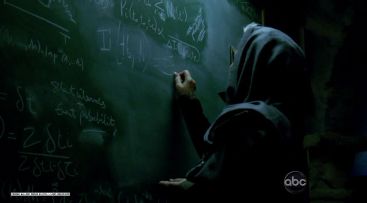
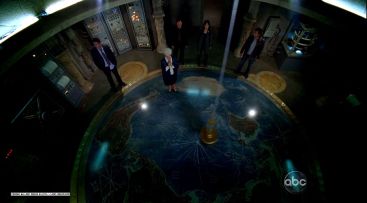
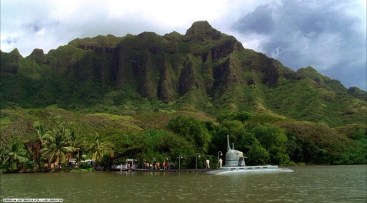








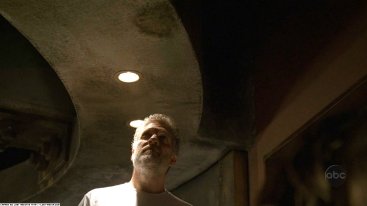


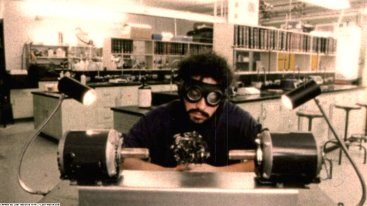



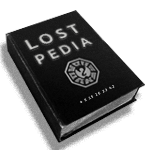
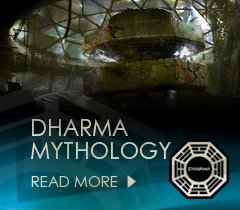


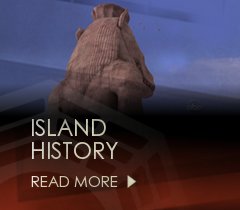








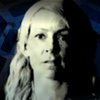


















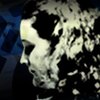



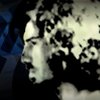














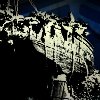



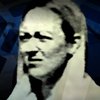





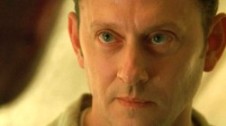




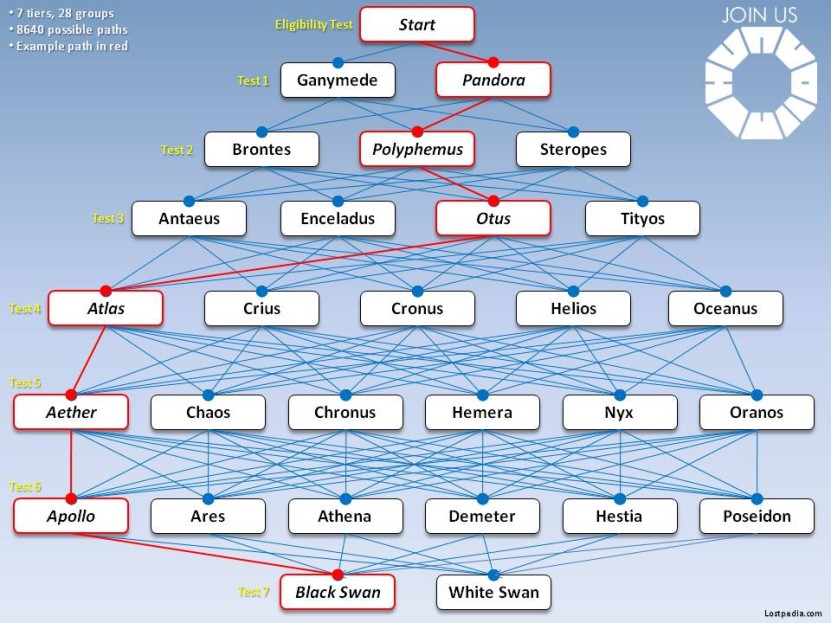



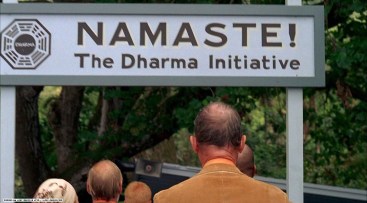
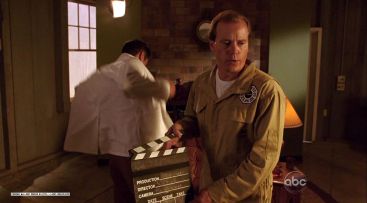




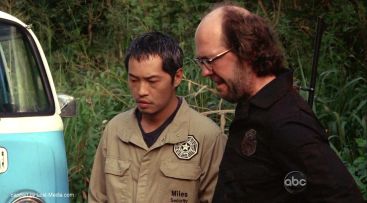



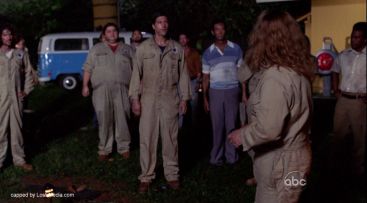













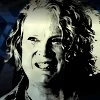
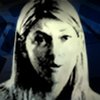

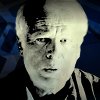
















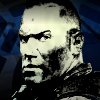


You must be logged in to post a comment.